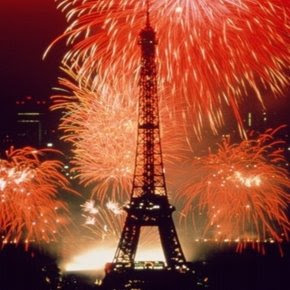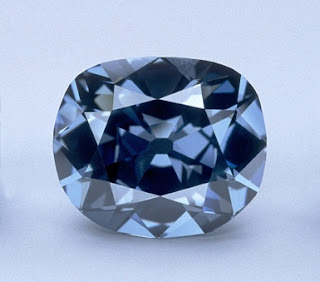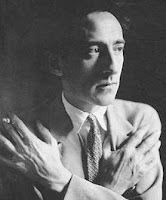.jpg)
Wednesday, December 31, 2008
Camille Pissaro - French Artist
His finest early works are characterized by a broadly painted (sometimes with palette knife), but with an incipient Impressionist palette.
Pissarro married Julie Vellay, a maid in his mother's household. Of their eight children, one died at birth and one daughter died aged nine. The surviving children all painted.
Known as the "Father of Impressionism", Pissarro painted rural and urban French life, particularly landscapes in and around Pontoise, as well as scenes from Montmartre. His mature work displays an empathy for peasants and laborers, and sometimes evidences his radical political leanings. He was a mentor to Paul Cézanne and Paul Gauguin and his example inspired many younger artists, including Californian Impressionist Lucy Bacon.
Pissarro's influence on his fellow Impressionists is probably still underestimated; not only did he offer substantial contributions to Impressionist theory, but he also managed to remain on friendly, mutually respectful terms with such difficult personalities as Edgar Degas, Cézanne and Gauguin. Pissarro exhibited at all eight of the Impressionist exhibitions. Moreover, whereasMonet was the most prolific and emblematic practitioner of the Impressionist style, Pissarro was nonetheless a primary developer of Impressionist technique.
Tuesday, December 30, 2008
Lesson # 45 -Occupations
Mystery Of The Hope Diamond

A lump of lead from a dusty drawer in a Paris museum has enabled French experts to solve a long-standing mystery.
The size of a pigeon's egg, the piece turned out to be a casting of the legendary Blue Diamond, the centre-piece of the crown jewels of pre-revolutionary France. The diamond, bought by Louis XIV in the 17th century, vanished when looters stole King Louis XVI's treasures in the heat of the revolution in 1792. The find in the Paris Museum of Natural History has in turn enabled researchers to prove that the long-lost blue diamond is one and the same as the Hope Diamond, a star exhibit of the Smithsonian Institution in Washington DC.
It had long been suspected that the Hope, which was given to the Smithsonian in 1958 by the jeweller Harry Winston and which is said to carry a fatal curse, came from the Diamant Bleu that was looted in Paris in 1792. This has now been confirmed by François Farges, the chief mineralogist with the Paris museum. He has concluded that the Hope is the cut-down heart of the 69-carat Indian diamond that the Sun King bought in the mid-17th century.
The Hope diamond changed hands many times. It came to Paris and was owned for a time by Pierre Cartier, the jeweller, before reaching the United States in 1911. The tale of a curse arose from the real or imagined sticky ends of some of its owners, including Louis XVI and Tavernier. The king ended up of course on the guillotine. The adventurer who brought it to France was said to have stolen it from a statue of the goddess Sita. He was later torn to pieces by wolves in Russia, according to the legend.
(excerpts from an article by Charles Bremmer-Times Online)
Monday, December 29, 2008
Children's Word Review of the Week
Toi & Moi by Grégoire
Toi plus moi, plus eux plus tous ceux qui le veulent,
Plus lui plus elle et tout ceux qui sont seuls
allez venez et entrez dans la danse
allez venez, laissez faire l'insouciance
A deux a mille je sais qu'on est capable
tout est possible tout est réalisable
on peut s'enfuir bien plus haut que nos rêves
on peut partir bien plus loin que la grève
oh Toi plus moi, plus tous ceux qui le veulent,
Plus lui plus elle plus tout ceux qui sont seuls
allez venez et entrez dans la danse
allez venez c'est notre jour de chance
avec l'envie la force et le courage
le froid la peur ne sont que des mirages
laissez tomber les malheurs pour une fois
allez venez , reprenez avec moi.
Ho, toi plus moi, plus tous ceux qui le veulent,
Plus lui plus elle et tout ceux qui sont seuls
allez venez et entrez dans la danse
allez venez laissez faire l'insouciance
je sais c'est vrai ma chanson est naïve
même un peu bête , mais bien inoffensive
et même si elle ne change pas le monde
elle vous invite a entrer dans la ronde
Oh toi plus moi plus tous ceux qui le veulent
plus lui plus elle et tous ceux qui sont seuls
allez venez et entrez dans la danse
allez venez c'est notre jour de chance
l'espoir l'ardeur font tous ceux qu'il te faut
mes bras mon coeur mes epaules et mon dos
je veux te voir des étoiles dans les yeux
je veux nous voir insoumis et heureux
oh toi plus moi plus tous ceux qui le veulent
plus lui plus elle et tous ceux qui sont seuls
allez venez et entrez dans la danse
allez venez, laissez faire l'insouciance
Oh toi plus moi plus tous ceux qui le veulent
plus lui plus elle et tous ceux qui sont seuls
allez venez et entrez dans la danse
allez venez c'est notre jour de chance
Oh toi plus moi plus tous ceux qui le veulent
plus lui plus elle et tous ceux qui sont seuls
allez venez et entrez dans la danse
allez venez et entrez dans la danse
The "Buried Voices" of the Palais Garnier

Sunday, December 28, 2008
French Word Origins - Séance
Saturday, December 27, 2008
Answer to Yesterday's Guess Who - Louis Jourdan


Jourdan was born as Louis Gendre in Marseille, France, the son of Yvonne (née Jourdan) and Henry Gendre, a hotel owner. He was educated in France, Turkey and England, and trained as an actor at the École Dramatique, making his film debut in 1939.
Following the German occupation of France during World War II, he continued to make films but after refusing to participate in Nazi propagandafilms, he joined the French Resistance.
In 1947, Jourdan accepted an offer from a Hollywood studio to appear in The Paradine Case, an Alfred Hitchcock drama starring Gregory Peck. There he became friends with several stars who shared his love of croquet. After a number of American films, most notably the 1954 romantic drama Three Coins in the Fountain, he made his Broadway debut in the lead role in Billy Rose' drama, The Immoralist. He returned to Broadway for a short run in 1955 and that year made his U.S. television debut as Inspector Beaumont in the series Paris Precinct.
During the 1950s Jourdan made several international films, including playing the male lead in The Bride is Too Beautiful opposite Brigitte Bardot. However, he may be best remembered as the romantic lead opposite Leslie Caron and Maurice Chevalier in the 1958 film version of theColette novel, Gigi. The film earned nine Academy Awards, including Best Picture.
Friday, December 26, 2008
Thursday, December 25, 2008
Wednesday, December 24, 2008
Tuesday, December 23, 2008
French Film - Les Chansons d'amour

Love Songs (French: Les Chansons d'amour) is a French 2007 film by Christophe Honoré. It was one of the 20 films running for the Featured Films competition at the 2007 Cannes Film Festival. A musical about love, life and death starring Louis Garrel, Ludivine Sagnier and Chiara Mastroianni. It was presented on Official Selection, thus it was nominated to the Golden Palm. The film's style is vaguely inspired by Jacques Demy film The Umbrellas of Cherbourg, which starred Catherine Deneuve, who is Chiara Mastroianni's mother.
Monday, December 22, 2008
Last Minute Holiday Gift For Small Children
Weekly Vocabulary Word Review
Soumia - French Singer
Soumia : "Ton Silence"
Sunday, December 21, 2008
Romeo & Juliet - the French Musical
Roméo et Juliette: de la Haine à l'Amour is a French musical based on William Shakespeare's play Romeo and Juliet, with music and lyrics by Gérard Presgurvic. It premiered in Paris on January 19, 2001. The production was directed and choreographed by Redha, with costumes by Dominique Borg and settings by Petrika Ionesco. The producers were Gérard Louvin, GLEM, and Universal Music.Since then, the musical has been performed in Canada, Antwerp, London, Amsterdam, Budapest, Szeged, Moscow, Vienna, Seoul, Pusan(South Korea), Taipei and Monterrey and has been translated into several languages, including Flemish, Hungarian, Russian, English, Germanand Spanish.
Suzuki Ad
Saturday, December 20, 2008
Disney Moment - Sous l'océan
Jean Cocteau

Friday, December 19, 2008
Kaysha - French Singer
Thursday, December 18, 2008
The Seashell & The Clergyman -First Surrealist Film
The Seashell and the Clergyman (French: La Coquille et le clergyman) is considered by many to be the first surrealist film. It was directed by Germaine Dulac, from an original scenario by Antonin Artaud, and premiered in Paris on 9 February 1928. The film follows the erotic hallucinations of a priest lusting after the wife of a general.
Although accounts differ, it seems that Artaud disapproved of Dulac's treatment of his scenario. The film was overshadowed by An Andalusian Dog (1929), written and directed by Luis Buñuel and Salvador Dalí. To this day, An Andalusian Dog is considered the first surrealist film, and its foundations in The Seashell and Clergyman have been all but overlooked. However, the iconic techniques associated with surrealist cinema are all borrowed from this early film. The film is only 28 minutes long. Part 1 is below and the other 2 parts can be found on YouTube for anyone who wants to watch it.
Part 1
Charles Perrault- French Writer
Charles Perrault (12 January 1628 – 16 May 1703) was a French author who laid foundations for a new literary genre, the fairy tale, and whose best known tales include Le Petit Chaperon rouge(Little Red Riding Hood), La Belle au bois dormant (Sleeping Beauty), Le Maître chat ou le Chat botté (Puss in Boots), Cendrillon ou la petite pantoufle de verre (Cinderella), La Barbe bleue(Bluebeard), Le Petit Poucet (Hop o' My Thumb), Les Fées (Diamonds and Toads), La Marquise de Salusses ou la Patience de Griselidis (Patient Griselda), Les Souhaits ridicules (The Ridiculous Wishes), Peau d'Âne (Donkeyskin) and Riquet à la houppe (Ricky of the Tuft). Perrault's most famous stories are still in print today and have been made into operas, ballets (e.g., Tchaikovsky's Sleeping Beauty), plays, musicals, and films, both live-action and animation.
Tuesday, December 16, 2008
Answer To Yesterday's Guess Who

Mathieu
Amalric (born 25
October 1965) is a three-time César Award winning French actor andfilm director, perhaps best known in America for his lead role in the four-time Academy Awardnominated 2007 film The Diving Bell and the Butterfly. He also has won the Étoile d'or and theLumiere Award. He is widely seen as one of France's greatest living actors.
Amalric was born in Neuilly-sur-Seine, a suburb of Paris, France, the son of journalists Nicole Zand, a literary critic for Le Monde, and Jacques Amalric, who has worked as a foreign affairs editor for Le Monde and Libération. Mathieu Amalric's mother was born in Poland to Jewish parents, and moved to France before World War II; she originates from the same village as director Roman Polanski's family. Amalric first gained fame in the film Ma Vie Sexuelle (My Sex Life...or How I Got Into an Argument), for which he won a César Award.
Amalric was selected to play the newest Bond villain Dominic Greene, and stars alongside Daniel Craig in the 2008 film Quantum of Solace, the sequel to the 2006 film Casino Royale. The villain Greene is plotting to take control of Bolivia's water supply through the Quantum Organization, and intending to stage a fake coup d'etat. Amalric and Craig also appear in Steven Spielberg's 2005 film, Munich, though they do not share any scenes.
Angelo Debarre - French Gypsy Guitarist
La Gitane - Angelo Debarre







